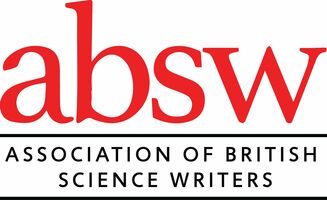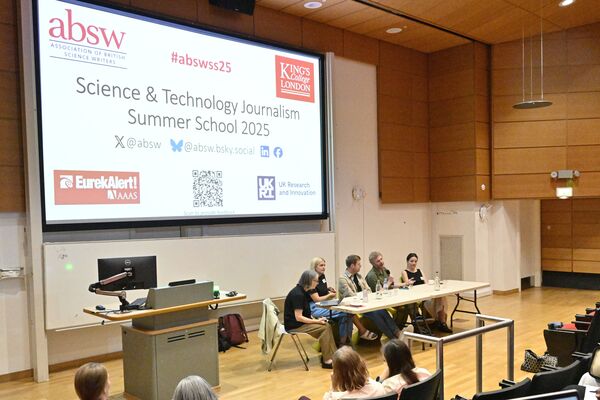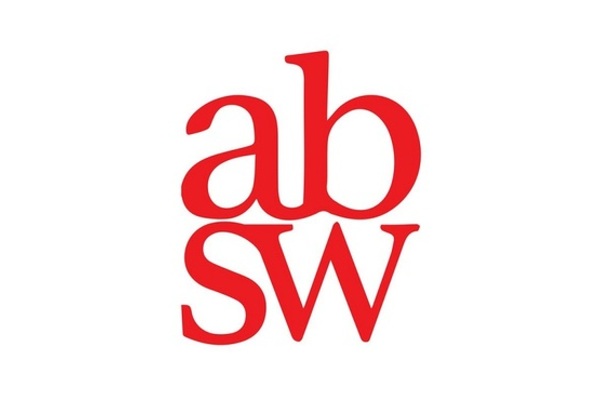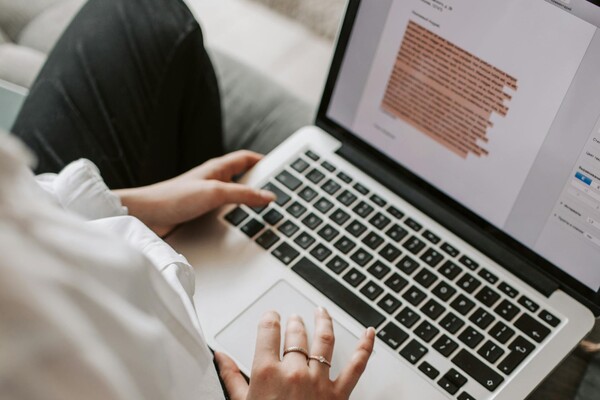Image by HUNG QUACH from Pixabay
“Science outlets have a crucial responsibility to document, analyse and amplify the realities, not only in Gaza,” Asmaa Abusamra says, but in “all crisis zones around the world, through an evidence-based, ethical and justice-orientated approach”.
The head of the Community Service and Continuing Education Centre at the University College of Applied Sciences, Gaza, Palestine, reminds journalists that reporting is crucial in highlighting the situation, to help in rebuilding and to combat disinformation in the media. “Science journalism must not remain neutral. Highlight the people, their stories, their suffering,” she says. “Focus on the people.”
How to report on science in conflict, what to report on, and the importance of reporting on such topics despite the difficulties that come with it were discussed in an online panel hosted by ABSW on February 27. Below is a guide with advice from the panellists:
How should these stories be reported?
What should be reported on?
How should these stories be reported?
1. Finding stories and sources
There are always people who try to document what is happening in these settings, says Miryam Naddaf, science reporter at Nature, and people are generally happy to speak to journalists. It can take some time and effort to find the right sources, but once you get to the right people, you can form a network of contacts that are useful to keep in touch with. One way to do this is through the diaspora, who are “often very helpful and have the right connections and networks to guide you,” she says.
It’s essential to work on stories from a cultural lens and ensure local voices are included. Bothina Osama, science editor and regional coordinator for SciDev.Net, advises working with people on the ground. Local reporters are invaluable in information gathering, for suggesting story ideas and getting photos or videos that may otherwise be difficult or impossible to obtain (as has been the case in Gaza, where Israel has banned foreign journalists from entering).
[More on "What should be reported on?"]
2. Safety
Bothina Osama stressed that the most important thing is to make sure people and sources are safe. When speaking to a source, ask them if it is safe for them to be speaking to journalists or to be giving the information they want to tell you. Some things may not get reported on due to safety concerns, which is unfortunate, but safety must always be a priority. Make sure to keep people anonymous if identifying them puts them at risk. She recounts how comments by a source in Iraq, which were published in an article, had to be later omitted after he started getting death threats from ISIS.
3. Reputable sources, evidence and fact-checking
Although it may be trickier than in non-conflict settings, it is still important to ensure you have reputable sources and evidence, reinforced Nisha Gaind, Nature’s European Bureau Chief. All facts published need to be reliable and evidence-based. Speaking about Rwanda, she explains how important reliable evidence is in combating disinformation, propaganda and denial of events that have happened, including genocide denial.
In countries like Libya and Yemen, things are made even harder with two sets of governments running the country, making it difficult to discern whose information to rely on. The easiest way to fact-check, says Miryam Naddaf, is to get facts from the United Nations or other international organisations.
4. Pitching to specialised publications and convincing editors
Specialised publications, Gaind says, are going to be interested in pitches of specialised stories. People working for these publications want to tell these stories, and, though it may seem unimportant in the thick of conflict, she says “scientists both inside and outside the conflict are really interested in these fundamental questions of things like collaboration, that are so core to the scientific enterprise that can get disrupted by conflict”.
“I just encourage you to think really hard about the niche that you might be reporting on”, says Nisha Gaind, Nature’s European Bureau Chief, “because lots of these stories are very, very under-reported. So, often you might be the only one of just a handful of journalists looking into that, and you will often have incredibly receptive sources and a receptive audience”.
5. How to write the story
Naddaf advises you to keep two key goals in mind: raising awareness and documentation. People may not know the details of how research and researchers are affected, so it’s important to raise awareness about those outside conflicts. At the same time, it’s also important to remember that the story matters to the people you are writing about, and that they will be reading it too. The reporting needs to be balanced, raising awareness for the audience who has no experience of it, and documenting for those who are directly affected by it.
What should be reported on?
1. The destruction of life, science and scientists
“Highlight the life cost of war and the importance of keeping up science and education during conflict,” says Bothina Osama, science editor and regional coordinator for SciDev.Net.
Asmaa Abusamra, who is a scientist and was in Gaza in October 2023, recounts the first days of Israeli bombardment: “I was preparing to go to work on October 7, and I remember I never reached campus that day”. She recounts how her neighbourhood was destroyed within a week, and how her family were forced to displace four times before finding themselves in a school shelter. There, Abusamra was offered a scholarship to leave Gaza, which was, she says, one of the hardest decisions she’s ever had to make.
Since then, every single one of Gaza’s 19 universities has been levelled to the ground. She explains how access to education has been systematically targeted. Reports highlight how “thousands and thousands of faculty members have been killed or injured,” she tells us, including 45 academics from her university alone.
Miryam Naddaf explained how the current conflict in Sudan, which first erupted in April 2023, started next to the University of Khartoum. Students were killed on campus, and lots of researchers have escaped the country. Syria also faced a similar situation.
2. The importance of continuing research and education
“Education and research institutions play a crucial role in shaping social landscapes during times of conflict, and act as both a stabilising force and space of resistance, resilience and recovery,” says Asmaa Abusamra, researcher at the University College of Applied Sciences, Gaza.
Bothina Osama stressed the importance of focusing on scientific institutions, how they are both affected by and help in times of war. She explains how the ability to work online has been instrumental for academics in conflict settings to sustain their academic work and even complete studying via online learning, which has been the case in Sudan and Gaza.
Nisha Gaind explained how it is important for scientific and academic communities to continue their work, so that there is a society when the war is over. Academic and research institutions, she says, are crucial in rebuilding and recovery. She gives an example of a university in Ukraine that managed to relocate and graduate a cohort of its students during the war.
She also spoke about Rwanda, where many academics were killed during the 1994 genocide. She explains how, at the time, it was normal for the research response to come from Western academic communities. In the years since, there has been a realisation of the importance of empowering local voices, and efforts to help local researchers build up their own capacity and study events that happened in the country, which have been crucial in developing accurate, nuanced accounts of political and social factors. “[This] has since played an important part in national healing.”
3. The secondary effects of conflict
Alongside the physical destruction to life, health, and infrastructure, there are secondary effects of conflicts, such as increased infectious disease outbreaks, food shortages and the environmental impact of war, which are also important to report on.
In Sudan, Osama tells us, the seasonal rains normally used for agriculture have not been used, as there are no longer enough farmers left to cultivate the land. This has led to both food insecurity and disease outbreaks. In Yemen, the use of pesticides imported during the war has had detrimental effects on the environment, as has the Israeli bombing in Gaza.
Moreover, it is useful to remember that not all science use is a force for good, especially when it comes to conflict. Nisha advises being aware of the complicity of researchers working with the state, such as those working at the National Research Centre in Syria, who helped develop chemical weapons that went on to be used against their fellow citizens.
4. Stories of hope
Amongst the wreckage of war, there are stories of hope and resilience that can be reported on, especially in post-conflict settings, where stories of rebuilding, healing and recovery are to be found.
Bothina Osama mentions the creative ways students and researchers are doing this in Gaza, via the use of solar panels and car batteries to power computers and stay connected to the internet. “Science can keep life going in conflict zones,” she says.
Abusamra also touches on this, speaking of the temporary learning spaces that have been created in Gaza, and that are referred to as 'spaces of hope’, with the goal of maintaining education, a sense of normalcy, a future, and, she says, to “spread Gaza with hope”.
And keep an eye on Syria, Miryam Naddaf tells the audience. She foresees lots of changes with the end of the Assad regime. Likewise with Ukraine. If current events lead towards the end of the war there, Nisha Gaind suggests it’ll be a good time to look at rebuilding and recovery.
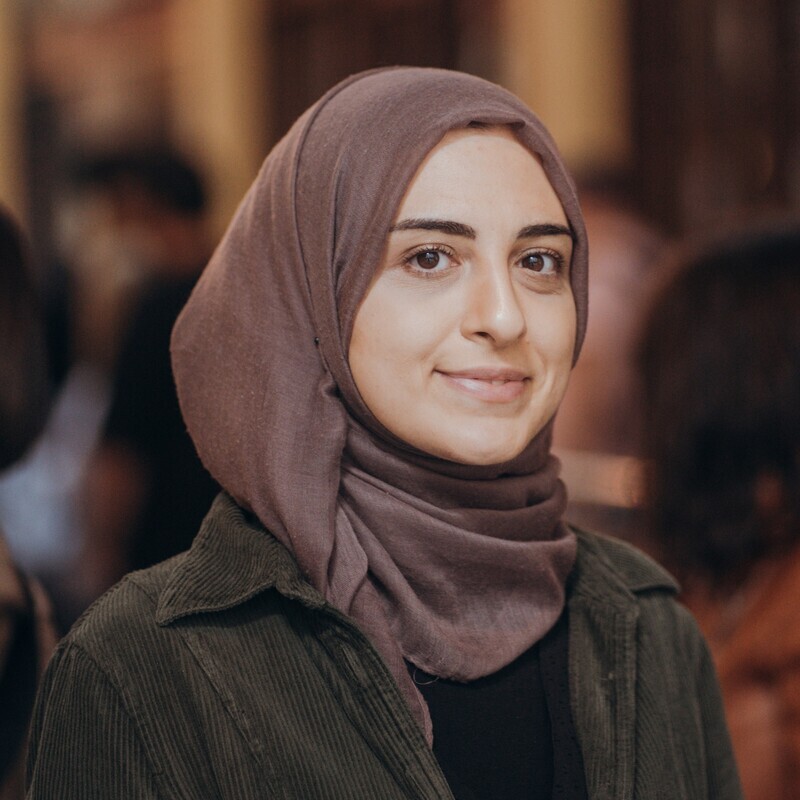
Zainab Hussain is a freelance health writer and researcher with interests in global health, inequalities, and the human experience. She has a background in Public Health and experience working in healthcare, NGOs, charities and academia.
